Wei Pang
Intelligent Collaborative Optimization for Rubber Tyre Film Production Based on Multi-path Differentiated Clipping Proximal Policy Optimization
Nov 19, 2025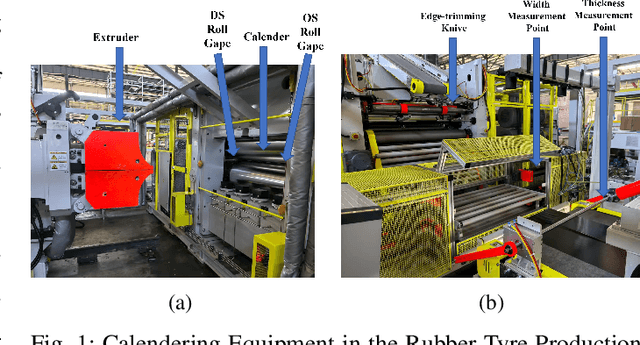
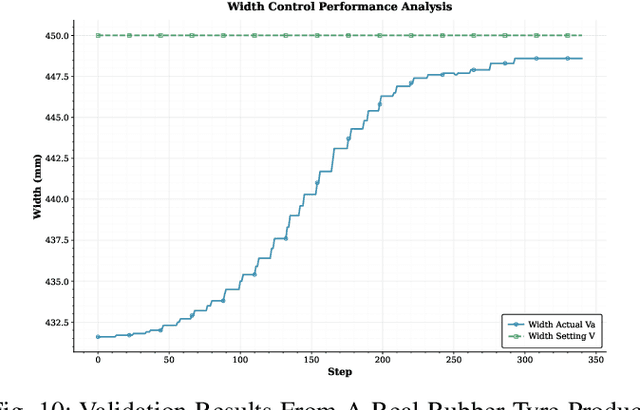
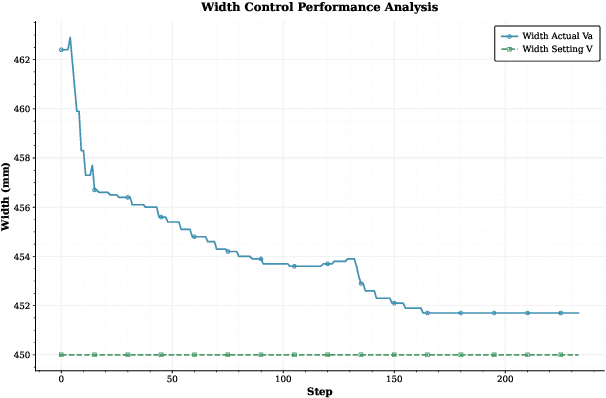
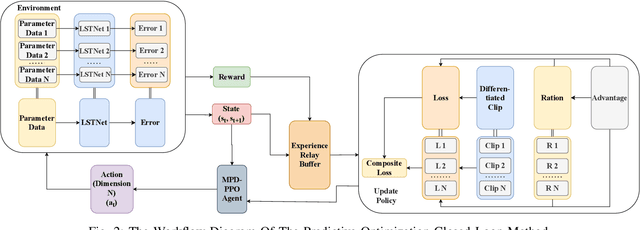
Abstract:The advent of smart manufacturing is addressing the limitations of traditional centralized scheduling and inflexible production line configurations in the rubber tyre industry, especially in terms of coping with dynamic production demands. Contemporary tyre manufacturing systems form complex networks of tightly coupled subsystems pronounced nonlinear interactions and emergent dynamics. This complexity renders the effective coordination of multiple subsystems, posing an essential yet formidable task. For high-dimensional, multi-objective optimization problems in this domain, we introduce a deep reinforcement learning algorithm: Multi-path Differentiated Clipping Proximal Policy Optimization (MPD-PPO). This algorithm employs a multi-branch policy architecture with differentiated gradient clipping constraints to ensure stable and efficient high-dimensional policy updates. Validated through experiments on width and thickness control in rubber tyre film production, MPD-PPO demonstrates substantial improvements in both tuning accuracy and operational efficiency. The framework successfully tackles key challenges, including high dimensionality, multi-objective trade-offs, and dynamic adaptation, thus delivering enhanced performance and production stability for real-time industrial deployment in tyre manufacturing.
LazyVLM: Neuro-Symbolic Approach to Video Analytics
May 27, 2025Abstract:Current video analytics approaches face a fundamental trade-off between flexibility and efficiency. End-to-end Vision Language Models (VLMs) often struggle with long-context processing and incur high computational costs, while neural-symbolic methods depend heavily on manual labeling and rigid rule design. In this paper, we introduce LazyVLM, a neuro-symbolic video analytics system that provides a user-friendly query interface similar to VLMs, while addressing their scalability limitation. LazyVLM enables users to effortlessly drop in video data and specify complex multi-frame video queries using a semi-structured text interface for video analytics. To address the scalability limitations of VLMs, LazyVLM decomposes multi-frame video queries into fine-grained operations and offloads the bulk of the processing to efficient relational query execution and vector similarity search. We demonstrate that LazyVLM provides a robust, efficient, and user-friendly solution for querying open-domain video data at scale.
Paper2Poster: Towards Multimodal Poster Automation from Scientific Papers
May 27, 2025Abstract:Academic poster generation is a crucial yet challenging task in scientific communication, requiring the compression of long-context interleaved documents into a single, visually coherent page. To address this challenge, we introduce the first benchmark and metric suite for poster generation, which pairs recent conference papers with author-designed posters and evaluates outputs on (i)Visual Quality-semantic alignment with human posters, (ii)Textual Coherence-language fluency, (iii)Holistic Assessment-six fine-grained aesthetic and informational criteria scored by a VLM-as-judge, and notably (iv)PaperQuiz-the poster's ability to convey core paper content as measured by VLMs answering generated quizzes. Building on this benchmark, we propose PosterAgent, a top-down, visual-in-the-loop multi-agent pipeline: the (a)Parser distills the paper into a structured asset library; the (b)Planner aligns text-visual pairs into a binary-tree layout that preserves reading order and spatial balance; and the (c)Painter-Commenter loop refines each panel by executing rendering code and using VLM feedback to eliminate overflow and ensure alignment. In our comprehensive evaluation, we find that GPT-4o outputs-though visually appealing at first glance-often exhibit noisy text and poor PaperQuiz scores, and we find that reader engagement is the primary aesthetic bottleneck, as human-designed posters rely largely on visual semantics to convey meaning. Our fully open-source variants (e.g. based on the Qwen-2.5 series) outperform existing 4o-driven multi-agent systems across nearly all metrics, while using 87% fewer tokens. It transforms a 22-page paper into a finalized yet editable .pptx poster - all for just $0.005. These findings chart clear directions for the next generation of fully automated poster-generation models. The code and datasets are available at https://github.com/Paper2Poster/Paper2Poster.
Survey of Video Diffusion Models: Foundations, Implementations, and Applications
Apr 22, 2025Abstract:Recent advances in diffusion models have revolutionized video generation, offering superior temporal consistency and visual quality compared to traditional generative adversarial networks-based approaches. While this emerging field shows tremendous promise in applications, it faces significant challenges in motion consistency, computational efficiency, and ethical considerations. This survey provides a comprehensive review of diffusion-based video generation, examining its evolution, technical foundations, and practical applications. We present a systematic taxonomy of current methodologies, analyze architectural innovations and optimization strategies, and investigate applications across low-level vision tasks such as denoising and super-resolution. Additionally, we explore the synergies between diffusionbased video generation and related domains, including video representation learning, question answering, and retrieval. Compared to the existing surveys (Lei et al., 2024a;b; Melnik et al., 2024; Cao et al., 2023; Xing et al., 2024c) which focus on specific aspects of video generation, such as human video synthesis (Lei et al., 2024a) or long-form content generation (Lei et al., 2024b), our work provides a broader, more updated, and more fine-grained perspective on diffusion-based approaches with a special section for evaluation metrics, industry solutions, and training engineering techniques in video generation. This survey serves as a foundational resource for researchers and practitioners working at the intersection of diffusion models and video generation, providing insights into both the theoretical frameworks and practical implementations that drive this rapidly evolving field. A structured list of related works involved in this survey is also available on https://github.com/Eyeline-Research/Survey-Video-Diffusion.
GraphOmni: A Comprehensive and Extendable Benchmark Framework for Large Language Models on Graph-theoretic Tasks
Apr 17, 2025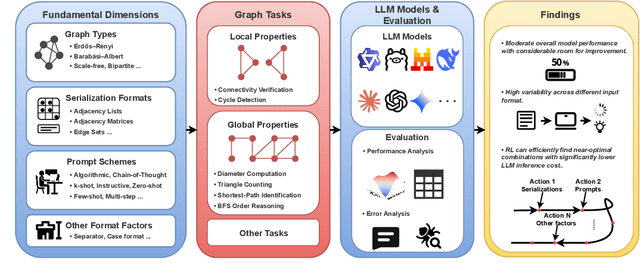

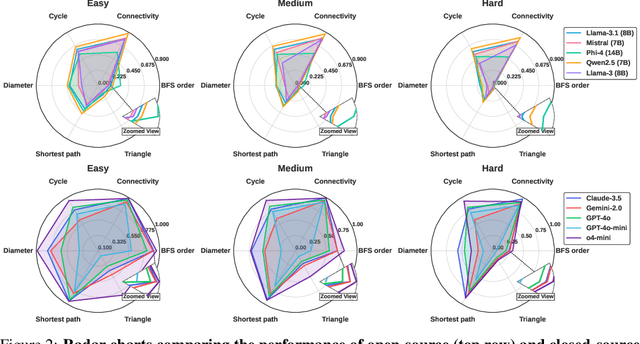
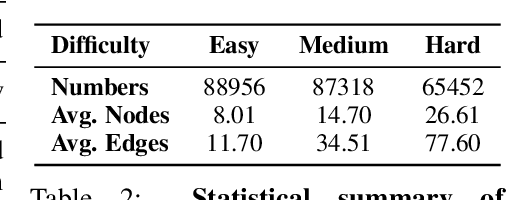
Abstract:In this paper, we presented GraphOmni, a comprehensive benchmark framework for systematically evaluating the graph reasoning capabilities of LLMs. By analyzing critical dimensions, including graph types, serialization formats, and prompt schemes, we provided extensive insights into the strengths and limitations of current LLMs. Our empirical findings emphasize that no single serialization or prompting strategy consistently outperforms others. Motivated by these insights, we propose a reinforcement learning-based approach that dynamically selects the best serialization-prompt pairings, resulting in significant accuracy improvements. GraphOmni's modular and extensible design establishes a robust foundation for future research, facilitating advancements toward general-purpose graph reasoning models.
An Efficient Diffusion-based Non-Autoregressive Solver for Traveling Salesman Problem
Jan 23, 2025



Abstract:Recent advances in neural models have shown considerable promise in solving Traveling Salesman Problems (TSPs) without relying on much hand-crafted engineering. However, while non-autoregressive (NAR) approaches benefit from faster inference through parallelism, they typically deliver solutions of inferior quality compared to autoregressive ones. To enhance the solution quality while maintaining fast inference, we propose DEITSP, a diffusion model with efficient iterations tailored for TSP that operates in a NAR manner. Firstly, we introduce a one-step diffusion model that integrates the controlled discrete noise addition process with self-consistency enhancement, enabling optimal solution prediction through simultaneous denoising of multiple solutions. Secondly, we design a dual-modality graph transformer to bolster the extraction and fusion of features from node and edge modalities, while further accelerating the inference with fewer layers. Thirdly, we develop an efficient iterative strategy that alternates between adding and removing noise to improve exploration compared to previous diffusion methods. Additionally, we devise a scheduling framework to progressively refine the solution space by adjusting noise levels, facilitating a smooth search for optimal solutions. Extensive experiments on real-world and large-scale TSP instances demonstrate that DEITSP performs favorably against existing neural approaches in terms of solution quality, inference latency, and generalization ability. Our code is available at $\href{https://github.com/DEITSP/DEITSP}{https://github.com/DEITSP/DEITSP}$.
Boosting Short Text Classification with Multi-Source Information Exploration and Dual-Level Contrastive Learning
Jan 16, 2025



Abstract:Short text classification, as a research subtopic in natural language processing, is more challenging due to its semantic sparsity and insufficient labeled samples in practical scenarios. We propose a novel model named MI-DELIGHT for short text classification in this work. Specifically, it first performs multi-source information (i.e., statistical information, linguistic information, and factual information) exploration to alleviate the sparsity issues. Then, the graph learning approach is adopted to learn the representation of short texts, which are presented in graph forms. Moreover, we introduce a dual-level (i.e., instance-level and cluster-level) contrastive learning auxiliary task to effectively capture different-grained contrastive information within massive unlabeled data. Meanwhile, previous models merely perform the main task and auxiliary tasks in parallel, without considering the relationship among tasks. Therefore, we introduce a hierarchical architecture to explicitly model the correlations between tasks. We conduct extensive experiments across various benchmark datasets, demonstrating that MI-DELIGHT significantly surpasses previous competitive models. It even outperforms popular large language models on several datasets.
Scale Invariance of Graph Neural Networks
Nov 28, 2024



Abstract:We address two fundamental challenges in Graph Neural Networks (GNNs): (1) the lack of theoretical support for invariance learning, a critical property in image processing, and (2) the absence of a unified model capable of excelling on both homophilic and heterophilic graph datasets. To tackle these issues, we establish and prove scale invariance in graphs, extending this key property to graph learning, and validate it through experiments on real-world datasets. Leveraging directed multi-scaled graphs and an adaptive self-loop strategy, we propose ScaleNet, a unified network architecture that achieves state-of-the-art performance across four homophilic and two heterophilic benchmark datasets. Furthermore, we show that through graph transformation based on scale invariance, uniform weights can replace computationally expensive edge weights in digraph inception networks while maintaining or improving performance. For another popular GNN approach to digraphs, we demonstrate the equivalence between Hermitian Laplacian methods and GraphSAGE with incidence normalization. ScaleNet bridges the gap between homophilic and heterophilic graph learning, offering both theoretical insights into scale invariance and practical advancements in unified graph learning. Our implementation is publicly available at https://github.com/Qin87/ScaleNet/tree/Aug23.
ScaleNet: Scale Invariance Learning in Directed Graphs
Nov 13, 2024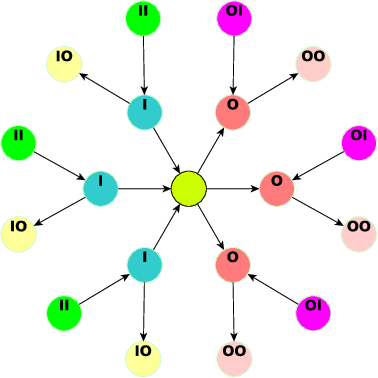

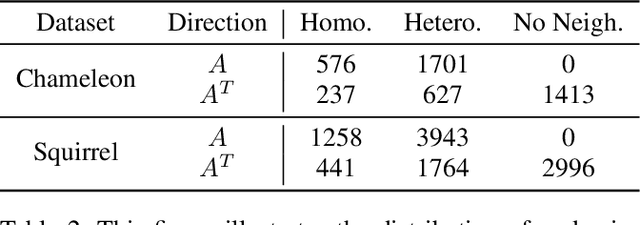
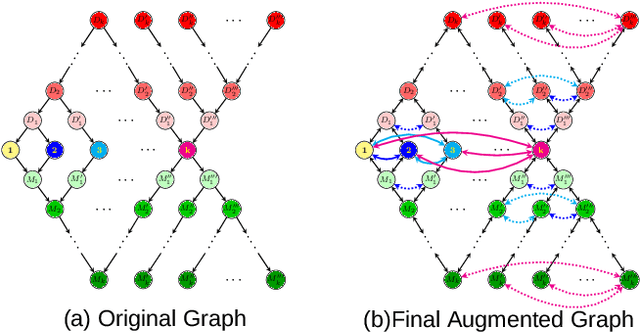
Abstract:Graph Neural Networks (GNNs) have advanced relational data analysis but lack invariance learning techniques common in image classification. In node classification with GNNs, it is actually the ego-graph of the center node that is classified. This research extends the scale invariance concept to node classification by drawing an analogy to image processing: just as scale invariance being used in image classification to capture multi-scale features, we propose the concept of ``scaled ego-graphs''. Scaled ego-graphs generalize traditional ego-graphs by replacing undirected single-edges with ``scaled-edges'', which are ordered sequences of multiple directed edges. We empirically assess the performance of the proposed scale invariance in graphs on seven benchmark datasets, across both homophilic and heterophilic structures. Our scale-invariance-based graph learning outperforms inception models derived from random walks by being simpler, faster, and more accurate. The scale invariance explains inception models' success on homophilic graphs and limitations on heterophilic graphs. To ensure applicability of inception model to heterophilic graphs as well, we further present ScaleNet, an architecture that leverages multi-scaled features. ScaleNet achieves state-of-the-art results on five out of seven datasets (four homophilic and one heterophilic) and matches top performance on the remaining two, demonstrating its excellent applicability. This represents a significant advance in graph learning, offering a unified framework that enhances node classification across various graph types. Our code is available at https://github.com/Qin87/ScaleNet/tree/July25.
Enhancing Graph Self-Supervised Learning with Graph Interplay
Oct 08, 2024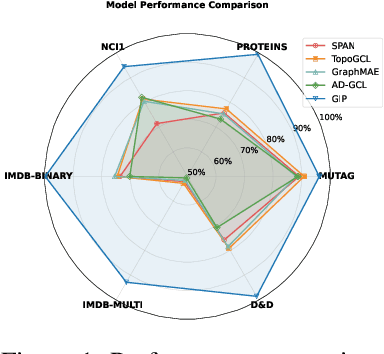
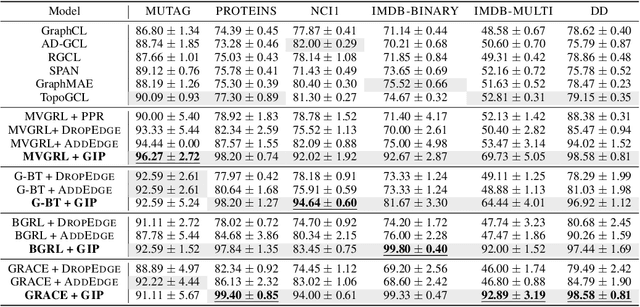
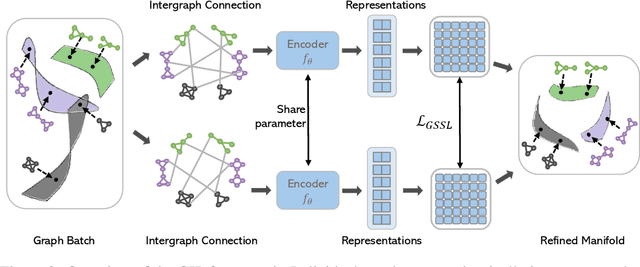

Abstract:Graph self-supervised learning (GSSL) has emerged as a compelling framework for extracting informative representations from graph-structured data without extensive reliance on labeled inputs. In this study, we introduce Graph Interplay (GIP), an innovative and versatile approach that significantly enhances the performance equipped with various existing GSSL methods. To this end, GIP advocates direct graph-level communications by introducing random inter-graph edges within standard batches. Against GIP's simplicity, we further theoretically show that \textsc{GIP} essentially performs a principled manifold separation via combining inter-graph message passing and GSSL, bringing about more structured embedding manifolds and thus benefits a series of downstream tasks. Our empirical study demonstrates that GIP surpasses the performance of prevailing GSSL methods across multiple benchmarks by significant margins, highlighting its potential as a breakthrough approach. Besides, GIP can be readily integrated into a series of GSSL methods and consistently offers additional performance gain. This advancement not only amplifies the capability of GSSL but also potentially sets the stage for a novel graph learning paradigm in a broader sense.
 Add to Chrome
Add to Chrome Add to Firefox
Add to Firefox Add to Edge
Add to Edge